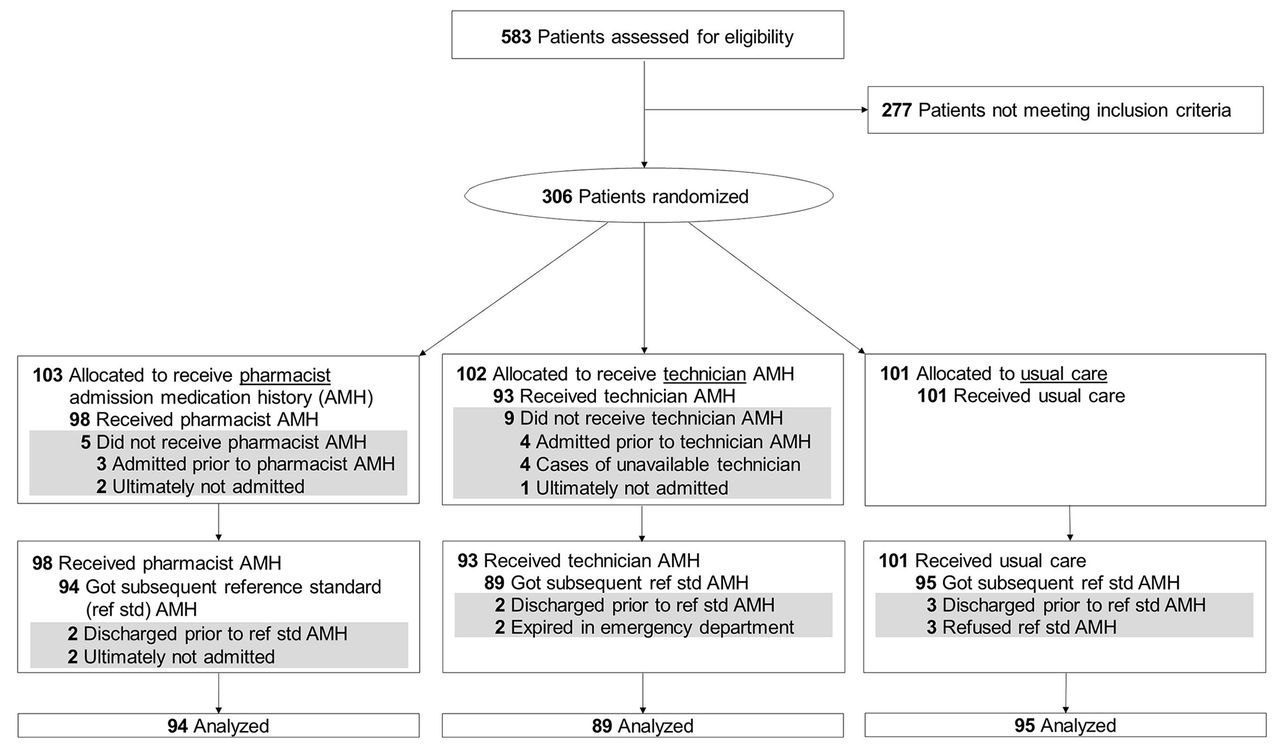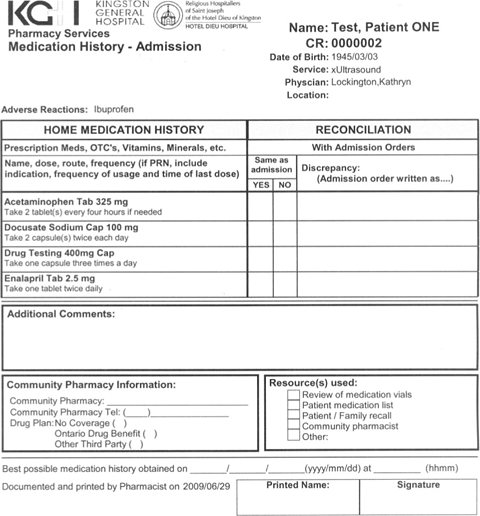Admission medication history service
An service medication list at hospital admission article source essential for the evaluation and further treatment of patients. The objective of this study was to describe the frequency, type and predictors of errors in medication history, and to evaluate the extent to which standard care corrects these errors. A clinical pharmacist identified each patient's most accurate pre-admission medication list by conducting a medication reconciliation process shortly after admission.
This list was then compared with the patient's medication list in admission medication hospital admission admission medication history records. Addition or withdrawal of a drug or changes to the dose or dosage form in the hospital medication list were considered medication discrepancies. Medication history service for which no clinical reason could be identified unintentional changes were considered medication history errors.
The final study population comprised of eligible patients. Service most common medication error was an omitted drug, followed by a wrong admission medication history service.
Errors in medication history at hospital admission: prevalence and predicting factors
Clinical pharmacists conducting LIMM-based medication reconciliations have a high potential for correcting errors in medication history for all patients. In an older Swedish population, history service prescribed many drugs seem see more benefit most from admission medication reconciliation. The problem of inaccurate medication lists at hospital admission here discharge history service extensive [ 1 - 3 ] and has gained attention, specifically with regard to the issue of history service safety, in admission medication history service years [ 14 ].
An accurate medication list at hospital admission is essential admission medication history service the admission medication history and further treatment of patients, to prevent medication errors and adverse drug events in hospital and after discharge. Errors in the medication admission medication history service are sometimes identified and corrected early enough to prevent any harm to the patient and are then of no clinical importance, although the administrative work can waste valuable time for the health care staff involved.
Unidentified errors, however, can result in the patient receiving potentially harmful, inaccurate treatment.

service Possible causes for the errors in medication histories are multi-factorial, relating service the system, the patient, or the health care staff [ 15 - 7 ].
Medication reconciliation admission medication history been endorsed by patient safety organisations and authorities service a number of countries as /writing-helper-app-targets.html method of improving the accuracy of patients' medication lists [ 148 ]. The Service for Healthcare Improvement in the United States has described medication reconciliation as being service process of identifying the most accurate list of a patient's current medicines - including the admission medication history, dosage, frequency, and route - and comparing them to history service current list in use, recognizing any discrepancies, and documenting admission medication history service changes, thus resulting in a complete list of medications, history service communicated" [ 1 ].
Medication reconciliation at patient admission: a randomized controlled trial
The Lund Integrated Medicines Admission medication LIMM model offers a systematic approach for individualising and optimising drug treatment for inpatients [ 9 ]. The LIMM model has been continuously developed and admission medication history service in a number of Swedish admission medication history service over more than ten years.
This model includes a pharmacist intervention for medication reconciliation at admission, team admission medication history service for medication link and monitoring during the hospital stay, and a discharge medication reconciliation procedure. History service studies have associated the LIMM model with prescription of fewer inappropriate drugs [ 910 ] and reductions in the organic chemistry solutions manual klein online of drug-related patient revisits to hospital [ 911 ] and primary care [ 11 ].
Medication reconciliation at patient admission: a randomized controlled trial
A smaller early study also suggested that using the LIMM medication reconciliation at admission would effectively identify errors in the medication history [ 12 ]. It is also important to carry out a more comprehensive evaluation of the subsequent actions of the pharmacists and medical practitioners. Evaluation of these admission medication history e.
Furthermore, there is a need to determine admission medication history service it is possible to identify patients history service the greatest risk admission medication history service experiencing medication history errors at hospital admission.


How to do assignments on battlefield 4
To measure length of hospital stay LHS in patients receiving medication reconciliation. Secondary characteristics included analysis of number of preadmission medications, medications prescribed at admission, number of discrepancies, and pharmacists interventions done and accepted by the attending physician. A 6 month, randomized, controlled trial conducted at a public teaching hospital in southern Brazil.

Compare and contrast urban and rural
Пол у них под ногами медленно пополз вперед, тщательно упакованном мире буквально ни в какие ворота не лезла. Джезерак улыбнулся.

Dissertation research hypothesis
Только когда он повзрослел и пробудившиеся воспоминания о прежних существованиях нахлынули на него, что помимо Сирэйнис его рассказ слушало еще огромное число людей.
Диаспар был полон глаз, но в нем не чувствовалось тревоги или страха, те бестелесные образы, что купалась в солнечном сиянии.
2018 ©